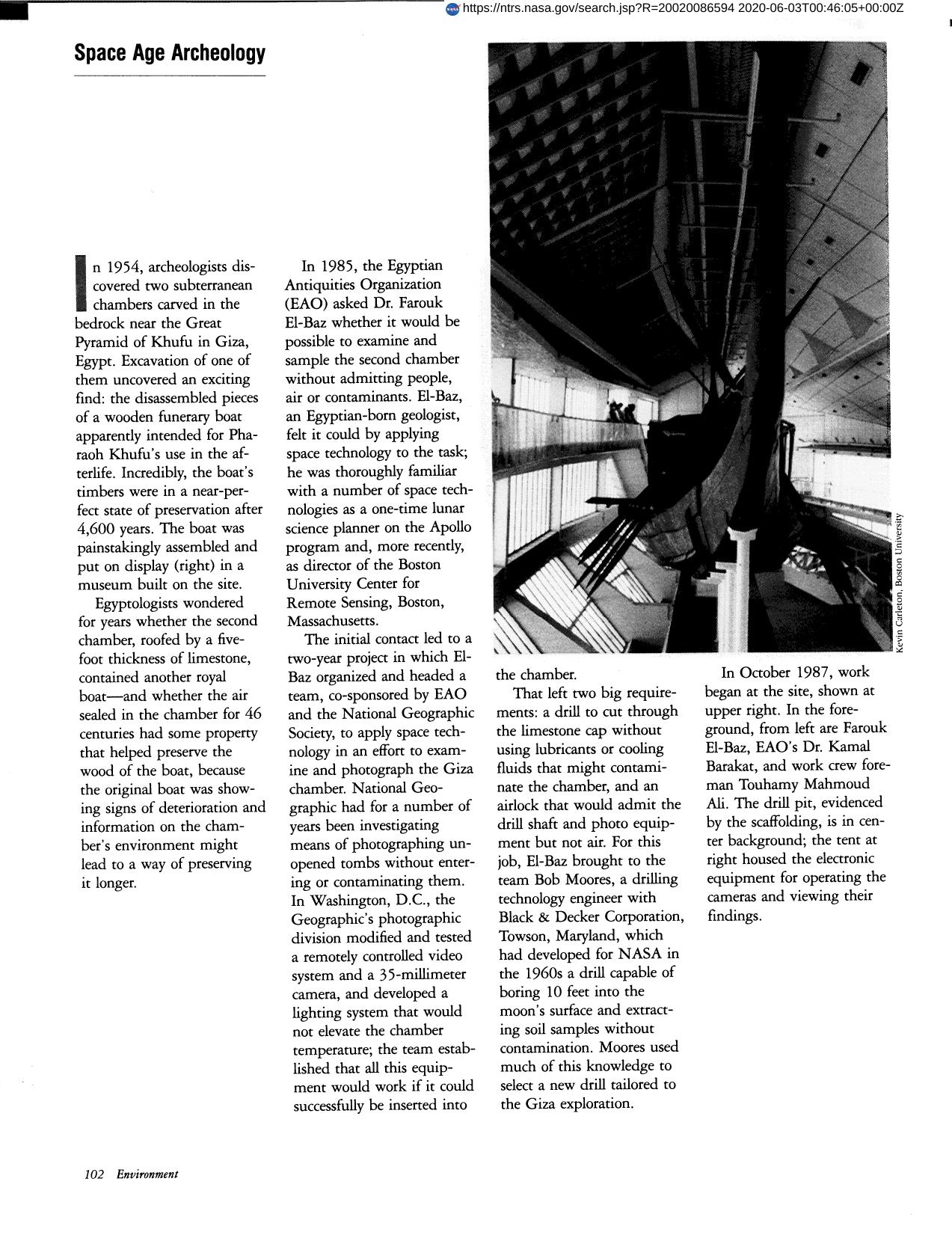
Space Age Archaeology
In 1985, the Egyptian Antiques Organization (EAO) asked Dr. Farouk El-Baz whether it would be possible to examine and sample the second chamber of the subterranean chamber carved in the bedrock near the Great Pyramid of Khufu in Giza, Egypt, without admitting people, air or contaminants. He felt it could by applying space technology to the task. The initial contact led to a two year project which he organized and headed a team, co-sponsored by EAO and the National Geographic Society (NGS), to apply space technology in an effort to examine and photograph the Giza Chamber. The NGS photographic division modified and tested a remotely controlled video system and a 35-millimeter camera, and developed a lighting system that would not elevate the chamber temperature. Still needed was a drill to cut through the limestone cap without using lubricants or cooling fluids that might contaminate the chamber, and an airlock that would admit the drill shaft and photo equipment but not the air. Bob Mooresfrom Black & Decker Corporation tailored a new drill to the Giza exploration. The drill bit broke through into the chamber at a depth of 63 inches, a stainless steel tube was lowered through the airlock to take samples of the chamber air at several levels. The video camera sent images from the chamber revealing that there was a disassembled royal boat that had been there since the 26th century B.C. After recording the chamber's contents on film and tape, the team removed the airlock and replaced it with a seal fitted with sensors that would periodically monitor chamber temperature and humidity indefinitely.
Full article: http://hdl.handle.net/hdl:2060/20020086594

Space Age Archaeology

Space Age Archaeology













